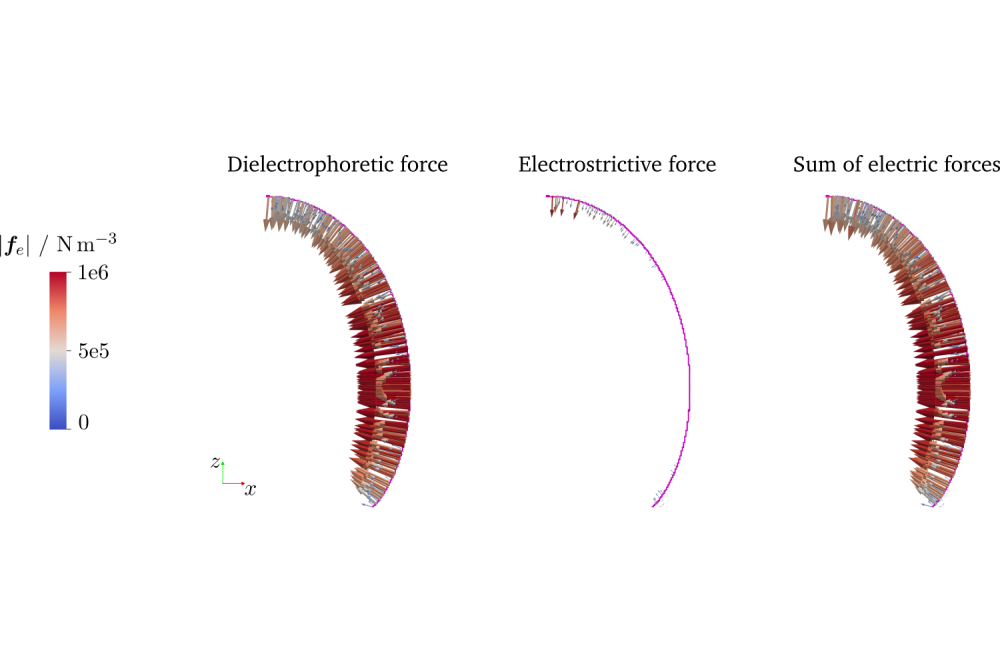RUBI Simulation (Numerical Simulations on the Effect of an Electric Field on Nucleate Boiling in Microgravity)
Einleitung
Nucleate boiling is a very efficient heat transfer mechanism. It is used in a wide variety of applications on Earth, such as energy conversion or chemical processes. Due to its high efficiency nucleate boiling is also a promising process for the cooling of electronic in space applications. In microgravity, the vapor bubbles do not leave their nucleation site by default, as there is no buoyancy force. Consequently, methods for removing the vapor bubbles from their nucleation site are researched. One possibility is the application of an electric field, which allows the manipulation of the bubble shape and location. Nucleate boiling together with an electric field is highly complex, as it involves mass, momentum and heat transfer on different temporal and spatial scales. Therefore, the numerical simulation of this process is quite challenging and requires lots of computational power. The High Performance Computer enables us to perform mesh studies, parametric studies and analyses with high resolution.
Methoden
We use a modified multiphase Volume-of-Fluid solver from the numerical toolbox Open-FOAM. It includes the modeling of a.o. accurate interface movement, phase change and conjugate heat transfer. The modeling of an electric field and the resulting electric forces was added to this solver. To our knowledge, for the first time the modeling of an electric field was coupled with phase change.
Ergebnisse
The newly developed solver was validated against experimental results from the Multiscale Boiling Project (RUBI) on the ISS. There, an electric field is applied via an electrode above the vapor bubbles. The non-uniformities in the dielectric properties (especially across the liquid-vapor interface) result in a non-uniform electric field, which induces electric forces. As our fluid is dielectric (FC-72), two kinds of forces arise: the dielectrophoretic and electrostrictive force. Good agreement was achieved and the electric forces on the bubble interface could be analyzed.
Diskussion
The application of an electric field leads to electric forces at the liquid-vapor interface of a vapor bubble. In our cases, our numerical simulations showed that the main component of the electric force is the dielectrophoretic force. This force acts more on the sides of the bubbles than on the top, so that the bubble is elongated. The electrostrictive force is significantly smaller and acts mostly on the top of the vapor bubble. The deformation of the bubble from a spherical shape helps in creating a larger surface area, so that with, e.g., a shear flow the vapor bubbles can be removed more effectively. In the end, the dielectrophoretic force also leads to the detachment of the vapor bubble from the nucleation site, as the contact line is forced to contract. Now, the nucleation site is freed and new vapor bubbles can nucleate. This leads to much higher heat transfer rates compared to the case of non-removal of the vapor bubble.
With the validated solver more cases with an electric field can be analyzed. Special focus will be on the detachment process.




